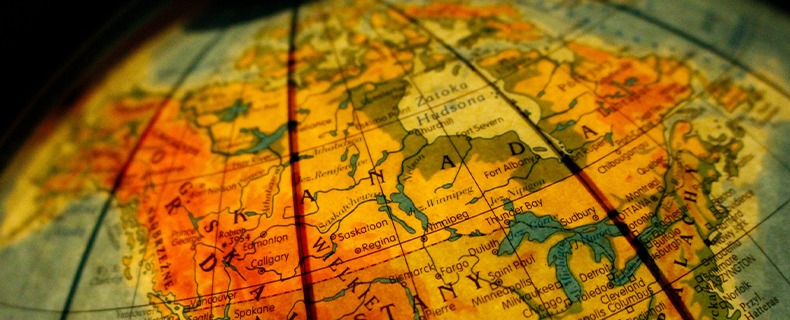
September 5, 2017
Huge Influxes of Refugees to Canada is Not New but the Numbers May Be!
Further to our discussion on CTV Your Morning huge influxes of refugees into Canada are not new. In fact, they date back hundreds of years. One of the first most notable influxes was in 1783 when 35,000 Loyalist refugees from New York entered into Nova Scotia. Some settled in Quebec, and others in Kingston and Adolphustown in Ontario. More recent examples include 37,000 Hungarians in 1956, 11,000 Czech refugees fled the Soviet and Warsaw Pact Communist invasion in 1968-1968 and in 1979 -1980: more than 60,000 Boat People found refuge in Canada after the Communist victory in the Vietnam War and a record number of 40,000 Indochinese resettled in 1980. Most recently, Canada resettled more than 40,000 Syrian refugees between November 2015 and January 2017.[1]
So, is the influx Canada has seen and may be facing from the United States (U.S.) any different?
It could be, here is why.
First it is important to understand the potential source of refugee claimants and what is happening in the U.S. The Secretary of Homeland Security may designate a foreign country for Temporary Protected Status (TPS) due to conditions in the country that temporarily prevent the country’s nationals from returning safely, or in certain circumstances, where the country is unable to handle the return of its nationals adequately.[2] According to the U.S. Citizenship and Immigration Services Website (USCIS) the countries that are currently designated and the expiry period of that designation include:[3]
10 TPS Countries in the U.S.

Further still the USCIS site informs:
The Secretary may designate a country for TPS due to the following temporary conditions in the country:
- Ongoing armed conflict (such as civil war)
- An environmental disaster (such as earthquake or hurricane), or an epidemic
- Other extraordinary and temporary conditions
During a designated period, individuals who are TPS beneficiaries or who are found preliminarily eligible for TPS upon initial review of their cases (prima facie eligible):
- Are not removable from the United States
- Can obtain an employment authorization document (EAD)
- May be granted travel authorization
Once granted TPS, an individual also cannot be detained by DHS on the basis of his or her immigration status in the United States.
TPS is a temporary benefit that does not lead to lawful permanent resident status or give any other immigration status.
The eligible candidates must have clean civil records and meet various other eligibility requirements. They are registered with the U.S. government.
So, what is different?
Staggering Potential Influx if TPS Suspended in 2017 and 2018
It is the potential numbers. 50 000 Haitians and 200 000 Salvadorans will be facing deportation if President Trump’s administration chooses not renew TPS for those nationals. As listed on the chart above all of these countries have rolling expiry periods throughout 2017 and 2018. While not all countries may be suspended even a few could mean large numbers. This is more than speculation as the U.S. Government, under President Trump, has indicated a shift in immigration policy including potentially not renewing the Temporary Protected Status (TPS) program for up to 10 countries, including Haiti and El Salvador.
Border Crossings to Avoid Safe Third Country Agreement
So, individuals have begin crossing into Canada avoiding official Ports of Entry (POE) to escape the application of the Safe Third Country agreement which states that the U.S. is a safe country, therefore, anyone entering from the U.S. cannot make a refugee claim at any official POE.[4] So as widely reported just in the recent months, six thousand people, mostly Haitians, have crossed from New York into Quebec out of fear of this policy change. It is reported 77% of all crossings have been through Quebec.[5]
There have also been reports on social media that Canada will give asylum seekers special treatment given their status in the U.S. [6] These reports are false, but nonetheless, have propelled Haitians into fleeing the U.S. and crossing into Canada. The same reports apply to the Salvadorans, as they are also protected by the same policy. The public panic created by this could easily cause the Salvadorans to follow suit with the Haitians.[7] Additionally, Canada has had a history of accepting Salvadorans into our Country. During the 1980’s, there was a surge of Salvadorans entering Canada due to the Civil War in the states.
Will Salvadorans Return to El Salvador or Opt For Canada?
As we discussed on Your Morning this is a nuanced situation as these individuals have long settled into the United States, birthed American children, are well established and are registered with the authorities making potential removal easier. The degree to which Salvadorans oppose returning to El Salvador is palpable based upon recent reports of country conditions[8]
- In an article by Habitat for Humanity, it was stated that about 34% of El Salvador’s population lives in poverty, compared to Canada’s 14%.
- The Government of Canada has indicated that you need a high degree of caution when living or travelling to El Salvador due to the high violent crime rates (murder, sexual assault, robbery etc.)
- The Public Health Agency of Canada has also indicated that the Zika virus is present in El Salvador and spreading
- El Salvador is considered a third world country due to its economic, social, illiteracy, poverty, lack of hospital services, education etc.
So just as Canada was being heralded for the resettlement of 46,700 refugees in 2016 as a “tremendous achievement” by a UNHCR representative[9] Canada may be facing its greatest challenge yet. In my next blog, we will discuss the potential impact on Canada and next steps.
Click below to watch the interview on CTV Your Morning
